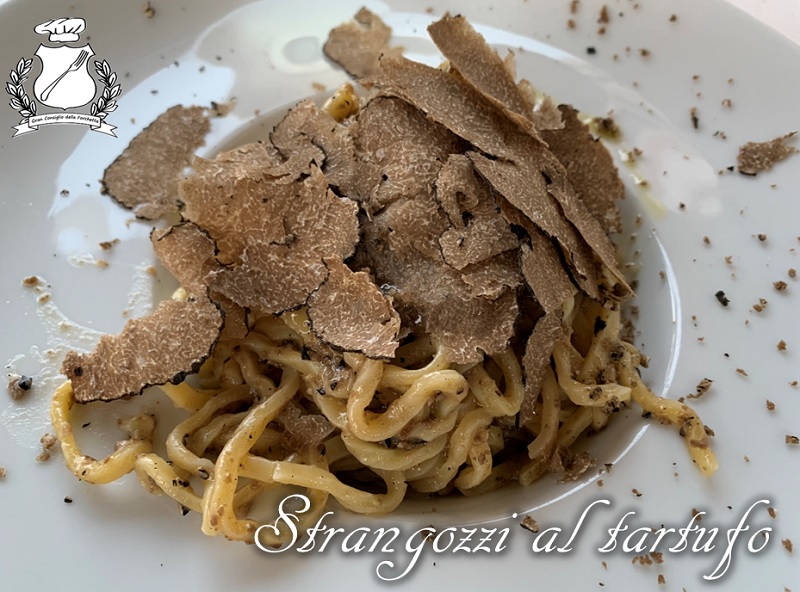The Traditional Recipes of Umbria

The typical recipes of Umbria
From a past rich in history, spirituality and art, a simple and natural cuisine has come down to us, far from excesses, sober and tasty. Umbrian cuisine can be described in two simple words: “simple solidity”, a definition that is also well suited to the architecture of the place with its Romanesque churches and houses made of stones and tiles. A rich but at the same time simple land, with hilly landscapes surrounded by wooded mountains has made this cuisine special.

Umbria and especially its traditions owe much to the great influence that sacredness and spirituality characterized these places in the Middle Ages. In fact, the numerous monastic orders that had great development here, the rhythms of life of the convents, but above all the numerous pilgrims who came from all over Europe had a great influence both on the territory and on the customs of the local population.
So the simple and “Romanesque” Umbrian cuisine derives above all from the great medieval influences that still characterize the area here today. Many Umbrian recipes are based on simple ingredients such as legumes, cheese, cereals and dried meat (ham, bacon, lard and sausage) which constituted the pilgrims’ livelihood food (they were easily stored and transportable).

These ingredients have now found form in dishes such as the torta al testo, a sort of local piadina often accompanied by cold cuts and cheeses, but also in the numerous soups made mainly of spelled and various legumes such as lentils, beans or broad beans, but also of bread and vegetables, often flavored with garlic and onion. The onion and the imbrecciata are two typical examples.
Umbria has the privilege of unequaled meats: pigs still fed on acorns, the Perugian ox, lambs and kids, not to mention the hunting that finds great enthusiasts here in these lands. Also in this case we find an immediate cuisine where the original flavors of the food are underlined, therefore Umbria is the undisputed kingdom of roasts: spit-roasted, grilled or oven-roasted, among which the great queen stands out: the Porchetta.
Forest products such as mushrooms, game and black truffles cannot be missing. The black truffles of Norcia and Spoleto ripen from November to March in almost the entire region and, unlike the white truffle, need to be cooked to best express their virtues.

The pastas took the form of stringozzi, umbrini and strascinati.
Even if Umbria is a region not washed by the sea, however, its gastronomic traditions are not lacking in fish recipes (freshwater fish of course) especially in the places bordering on Lake Trasimeno. Hence the medieval custom of calling Perugians “magnalasche”, precisely because of their aptitude for preparing fried fish. Thus we have the queen in porchetta, the local carp prepared with garlic and wild fennel, and the tegamaccio, a tasty fish soup.

Even the great confectionery tradition was greatly affected by medieval influences, which produced sweets such as brustengo, a polenta with apples and dried fruit, torciglione, a snake made of almond paste, broad beans of the dead, dry sweets and ciaramicola, cake Easter par excellence. Other famous desserts are panpepato, panmelato, pannicia, panmostato and the nociata. Attorta is a puff pastry snake stuffed with apples, walnuts and cocoa. The rock of Assisi, the pinoccata of Perugia, a cake of pine nuts and sugar.

